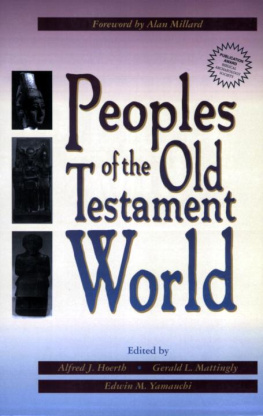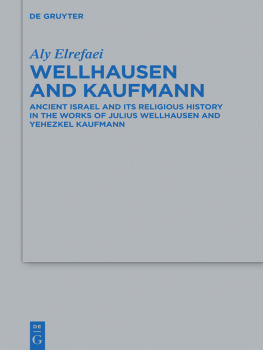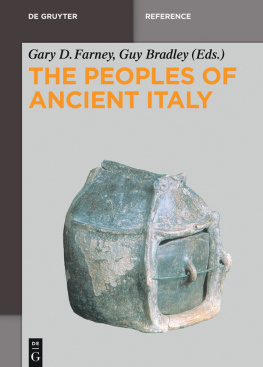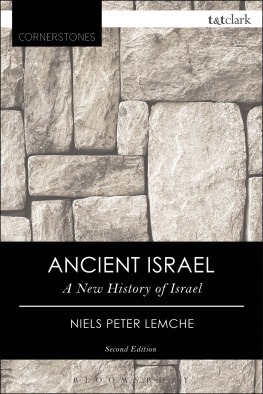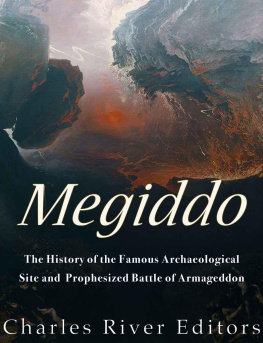






Part l: Mesopotamia
Part 2: Anatolia, Syria-Palestine, and Egypt
Part 3: Transjordan
"Peace" panel of the sounding box of a harp / 31
Statue of Gudea / 35
Steward Ebih-Ilu from Mari / 46
Female worshiper from Mari / 47
Head of Hammurapi from Susa / 48
Nabu-apla-iddina, son of Adnaya, and King Nabu-apla-iddina / 56
Stele of Nabonidus before the symbols of the deities Sin, Shamash, and Ishtar / 65
King Ashurnasirpal II / 88
Ashurbanipal and his queen dine, while entertained by musicians / 99
Sennacherib at the siege of Lachish in Judah in 701 B.C. / 104
Alternating Persians and Medes from the Apadana at Persepolis / 111
Treasury relief from Persepolis depicting Darius (or Xerxes) on the throne / 116
King and queen from Alaca Huyuk / 139
Warrior from the King's Gate at Hattusha (Bogazkoy) / 147
Canaanite head from Ugarit (Ras Shamra) / 169
Bronze plaque from Hazor / 176
Woman in ivory from Megiddo / 177
Sarcophagus of King Eshmunazar II of Sidon / 185
Phoenician nobleman from Dor / 196
Gold funerary mask from Phoenicia / 200
Prince from CAin et-Tell in North Syria / 214
Tell Fekheriyeh statue with bilingual Assyrian-Aramaic inscription / 225
Captives of Ramesses III displayed at Medinet Habu, including a Philistine / 236
Beth-shan anthropoid coffin / 249
Triad of King Menkaure (Mycerinus) and two goddesses / 259
Seti I (Dynasty 19) bowing before the god Thoth / 277
Head of a king (late Dynasty 25) / 281
Male figure wearing an Atef crown / 309
Seal of Milkom 'ur, servant of Baal-yashac / 314
Shihan warrior stele / 325
Moabite stone / 329
Goddess with horned headdress from Qitmit / 341
Kneeling figure (or dancer) from the high place at Qitmit / 342
Rankin Professor in Hebrew and Ancient Semitic Languages University of Liverpool
"The Lord has chosen you out of all the people on the face of the earth to be his people," said God through Moses (Deut. 7:6). Ancient Israel lived in a world of many nations and it had to interact with them. The Bible tells a certain amount about some, very little about others. Some appear briefly, then disappear; others recur through several books and clearly had a major impact on Israel's history. Knowing about these peoples should broaden understanding of the biblical text, helping to answer questions such as, "Who were the Hittites?" or "Why were the Assyrians so feared?" It is easy to look in a Bible dictionary to find a short account of the people that the Bible names; the purpose of this book is to give more information about the major ones than such entries usually allow, with references for detailed study. Readers will soon see that the Bible is a major source for knowledge about some peoples (e.g., Philistines, Edomites, and Canaanites), while for others (e.g., Egyptians and Assyrians) their own inscriptions reveal so much about them that the Bible is marginal to their history.
The Bible often views Israel's contemporary states with a hostile eye, for political and especially religious reasons. Accordingly, historians read those texts critically to counter that bias. In some cases that has lead to a negative attitude that refuses to give credit to biblical statements unless other evidence supports them. The course of research on the ancient Near East over the past century and a half has shown repeatedly how well the Hebrew Scriptures reflect the realities their authors know. The insecurity of states like Israel and Judah becomes very clear, with neighbors frequently hostile and great powers approaching from the horizon. To be captured in a raid, like Naaman's maid (2 Kings 5), or to be exiled wholesale was a risk that many ran throughout history, not a new experience when Samaria or Jerusalem fell. The prophecies of Amos, Isaiah, Jeremiah, and others gain in power and urgency as the current affairs of those days are understood, and this only becomes possible as the stories of the other nations are uncovered.
Besides the thousands of written documents recovered from the biblical world, there is a vast array of archeological evidence. Buried buildings, pots and pans, iron knives, golden bowls, children's graves-all combine to bring the past to life, to remind us that we are reading about actual human beings like ourselves. The kings had their great palaces and temples, displaying their wealth and power, but supporting them were merchants and artisans, farmers and slaves. Archeologists can never restore a picture of the past completely, as often their major find is the refuse of antiquity, and even then the smells have vanished. Therefore, there are many gaps in our knowledge. In addition, it has to be remembered that material remains usually yield less exact information than inscriptions, so the written records have a special value, notably when other written texts are being interpreted.
The essays in this volume weave together the results of recent study and discovery, long-known facts, and the biblical text to create pictures of the peoples of the Old Testament world. The authors have made them as complete and accurate as possible, aiming to give a better understanding of the distinctive feature of ancient Israel-God's revelation of himself through its history.

